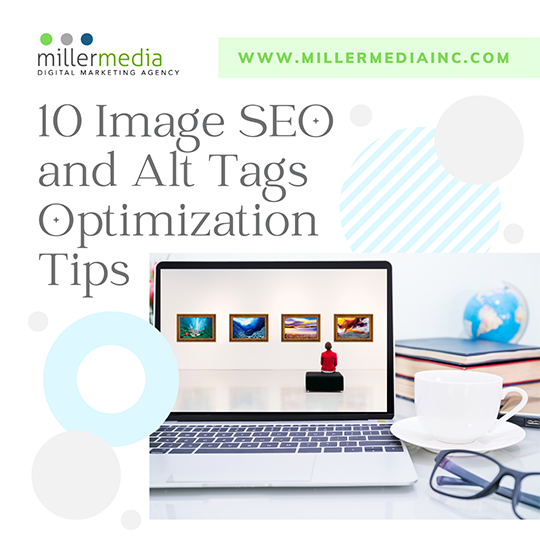Google Image searches account for 22.6% of all searches. Optimize your images to gain more traffic from search engines to your website and rank higher on Google’s results page. Images are an important part of on-page SEO and Google is increasingly showing images in the regular search results, often above the usual organic results. Another important reason you might want to optimize your images is it improves accessibility, which is increasingly becoming a legal requirement in many countries. Alt text (or alternative text, sometimes refer to alt text as “alt attributes” or “alt tags”) is a written description of an image. Alt text lets you tell Google what the image shows and helps e-readers tell what is happening on a web page to users with impaired vision. This helps Google better understand the context of an image to determine how to rank the page. Here are 10 tips to improve these alt tags and image SEO:
1. Name Your Images Properly
Give descriptive names to any images before uploading them to your site. Google recommends using hyphens rather than underscores to separate words.
2. Resize Images to the Display Dimensions
User experience is positive when the page speed is fast. One way to improve this is to adjust your images for exact size. Most smartphones take photos that are at least 4032 pixels by 3024 pixels, which is important for a mobile-friendly website design.
3. Compress Images
Reduce image file sizes is another good way to decrease web page load times. Minimize the file size without compromising the quality to an unacceptable degree. This will remove any redundancy in the image data in favor of efficiency and faster loading speeds when you use the image.
4. Choose the Right Format
- JPEG
- Online photos or artwork
- Useful for emailing preview images
- Can be compressed to very small sizes
- PNG
- Use if there is transparency in the image background
- WebP
- Higher compression than a JPEG or PNG
- Supports images and animated images without sacrificing color depth, animated frames, etc.
- Doesn’t work with older browsers.
- SVG
- For icons or logos
5. Create an Image Sitemap
An image sitemap is a lot like a regular XML sitemap, except that an image sitemap only includes the URLs to images.The URLs of all the images on your site can help Google discover those images and include them in image search results.
6. Use a Content Delivery Network
A content delivery network (CDN) is a group of servers located at different locations around the world and allows for quicker distribution of content to separate locations. This makes images and other content load more quickly creating a better user experience globally.
7. Implement Lazy Loading
Use “lazy loading” to tell web browsers to wait to load an image until it is needed. The page loads much more quickly when the user first lands on it and it’s not just used for images; assets like JavaScript can be loaded this way. According to Google, you should avoid lazy loading above-the-fold images. This would create a poor user experience. Use it for images further down your website or for images of non-vital importance.
8. Leverage Browser Caching
Browser caching is when files are stored by a visitor’s browser and assets load faster when they next visit the page. Browser caching is noticeably impactful on sites where users frequently revisit the same pages. This is important if your website requires repeat visitors such as an ecommerce business website.
9. Add Image Structured Data
Structured data is a data vocabulary that helps search engines understand your site’s information more clearly and using it also increases the chances of your images showing up as “rich results.” This enhances your image search listing and if you plan to use structured data to support an image, make sure that the image is relevant to the page it appears on. Keep in mind all image URLs must be crawlable and indexable. Otherwise, Google won’t be able to find them and show them on results pages. Currently, Google Images supports the following types of structured data currently:
- Product
- Video
- Recipe
10. Optimize for Open Graph & Twitter Cards
Open Graph tags allow you to choose how a social media post preview appears. This is an off-page SEO technique that means you can choose the preview title, image, and more for social posts appearances. An example of this would be to ensure your image of choice shows up when you share a page, include this image tag in the <head> section of your page’s HTML
Conduct a site audit with us to check if your images have alt descriptions. Call 248.528.3600

